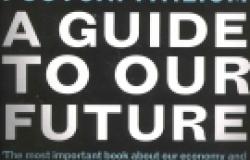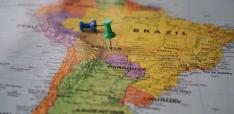Will there be Postcapitalism? Review of Paul Mason’s “Postcapitalism: A Guide to our Future”

Postcapitalism: A Guide to Our Future. Paul Mason. Allen Lane. 2015. ISBN-10: 1846147387. 368 pages.
It is an immensely ambitious book. In less than 300 pages, Paul Mason not only explains the past 300 years of capitalism and the efforts to replace it with another system (socialism), but shows how it would be eventually transformed and proposes a set of policies to help that transformation along. Moreover, it is not a superficial book as it might seem at first by contrasting the enormity of the material covered and the relatively slender size of the volume. One should not be misled either by the folksy style used by Mason. The style may be journalistic, but the questions asked, the quality of the discussion, and the objectives of the book are first-rate.
The book can be read in many ways. One could focus on the last three chapters which are of a programmatic nature and intended to supply some positive objectives to the new left. Or one could discuss the book’s belief in cyclical development of capitalism driven by the long-run Kondratieff’s cycles (we are currently, according to Mason’s reading, in the upswing of the fifth cycle). Or one could focus on Mason’s very brief but powerful history of the workers’ movements (Chapter 7) and one of his rare agreements with Lenin that workers could at best reach “trade-union consciousness” and were not interested in overthrowing capitalism. Or one could debate the usefulness of Mason’s resuscitation of Marx’s labor theory of value.
I will not do any of this since this review is relatively short. I will discuss Mason’s view of the current state of capitalism and of the objective forces that, he argues, lead it to postcapitalism. The gist of Mason’s argument is that the ICT revolution is characterized by enormous economies of scale which make the marginal cost of production of knowledge goods close to zero, with both the quantities of capital and labor embodied in such products tending to zero. Imagine an electronic blueprint of whatever needed for 3D printing or a software directing the work of machines: once such investments have been made there is hardly any need for additional live labor, and since the capital (software) has a quasi infinite life, the share of capital “embodied” in each unit of output is minimal (“what you ideally want is a machine that never wears out, or the one that costs nothing to replace”, p. 166). When the marginal cost of production goes to zero, the price system no longer functions, nor can standard capitalism exist: if profits are zero, we do not have a capitalist class, nor surplus value, nor positive marginal product of capital, nor wage labor. We are approaching the world of mass abundance where the usual rules of capitalism no longer apply. It is a bit like the world of absolute zero temperature, or the world where time and energy become one. It is in other words a world very far from the one that we inhabit now but it is where, according to Mason, we are going.
When the marginal cost of production goes to zero, the price system no longer functions, nor can standard capitalism exist: if profits are zero, we do not have a capitalist class, nor surplus value, nor positive marginal product of capital, nor wage labor. We are approaching the world of mass abundance where the usual rules of capitalism no longer apply. It is a bit like the world of absolute zero temperature, or the world where time and energy become one. It is in other words a world very far from the one that we inhabit now but it is where, according to Mason, we are going.
What are the ways capitalists can offset driving themselves out of existence? There are three ways, and to those who have read Marxist literature of the early 1910s, they would be familiar because similar issues were discussed then. The first is to create monopolies. This is exactly what Apple, Amazon, Google and Microsoft are doing now. The economy can become monopolized and cartelized as it did in the last decades of the 19th and the first decades of the 20th century.
The second response is to reinforce protection of intellectual property. This is again what the just mentioned companies, or song producers and Disney are trying to do ever more aggressively using the power of the state. (The reader would realize that protection of property rights increases capital unit costs and thus prevents the marginal cost of production dropping to zero.)
The third response is to continually expand capitalism’s “field of action”: if profits in one area threaten to drop to zero move to another area, “skating [forever] to the edge of chaos” between expanding supply and falling prices, or …find new things that can be commercialized and commodified.
Readers of Rosa Luxemburg would recognize here a very similar idea, namely that the existence of capitalism depends on its continued interaction with non-capitalist modes of production and once these are exhausted capitalism will be driven to the world of zero profits. These concerns have an even older pedigree, going back to Ricardo’s view that, without the repeal of the Corn Laws, all capitalists’ profits will be eaten up by landlords’ rents and development stifled, and to Marx’s “law of tendencial fall of the rate of profit” caused by ever greater capital intensity of production.
So Mason’s points in this respect are not new, but situating them at the current stage of capitalism and ITC revolution is new. The three ways that capitalists try to redress the ineluctable decrease of the rate of profit are all found wanting. If monopolies were a way to maintain capitalism that would imply the end of technological progress. Capitalism would become a “regressive” system. Not many people would disagree with Mason’s call to suppress the monopolies such as Amazon and Microsoft. The same is true for protection of property rights whose enforcement moreover is getting more and more difficult.
So with a tendency of profits to go to zero and inability to protect property rights, the only solution that remains is commercialization of daily life (the new “field of action”). This is how Mason explains the tendency of capitalists to move unto previously non-market transactions: to create new goods out of our homes which we now rent by the day, out of our cars, out of our free time. Practically every human interaction will have to be commodified: mothers will charge each other a penny when they push each other’s kids on a swing in the playground. But this, Mason argues, can’t continue. There is a natural limit to what the humans will accept in terms of commodification of daily activities: “you would have to treat people kissing each other for free the way they treated poachers in the 19th century” (p. 175).
Mason’s arguments are, I think, very persuasive so far, but this is the place where I am tempted to part ways. His explanation of why we are living through a period of unprecedented commodification of our personal lives is very well taken, but his optimistic outlook that such commodification faces limits as well as his emphasis on the increasing importance of non-market transactions (open source software, writing blogs like this one for free etc.) is wrong.
Let me start with the latter. Mason exaggerates the importance of new technologies or new goods that are developed through cooperation and supplied for free. Yes, many things can be accessed for nothing but even if they seem to be provided voluntarily there is, in the background, a mercenary element: you may write a code or text for free but this is done to influence others, become noticed and ultimately paid for it. Mason probably wrote his book for free; but the success of the book will ensure that he would be paid for whatever next he says or writes. So focusing on the former without including the latter is misleading.
Why is his view on commodification wrong? Commodification is not just imposed on us externally through companies that want to find new sources of profits. We are willingly participating in commodification because through long socialization in capitalism, its global reach and thus mimicry among those who have not been socialized as long, people have become capitalistic calculating machines. We have each become a small center of capitalist thinking, assigning implicit (”shadow”) prices to our time, our emotions or family relations.
The ultimate success of capitalism is to have transformed, or developed, human nature into making each of us into excellent calculators of “pain and pleasure”, “gain or loss” so much so that even if capitalist factory production were to disappear today we would be selling each other services for money: we shall become companies. Imagine an economy (similar externally to a very primitive one) where all production is conducted at home. This would seem a perfect model of a non-market economy. But if we had such an economy today, it would be fully capitalistic because we would be selling all these goods and services to each other: a neighbor will not keep an eye on your children for free; nobody will share food with you but will charge you; you will make your husband pay for sex and so forth. This is the world we are moving towards, and the field of capitalistic operations is thus likely to become unlimited because it would include each of us. “The factory in the cognitive capitalism is the whole of society” (p. 139).
Capitalism will run for a very long time because it was successful in transforming humans into calculating machines endowed with limitless needs. What David Landes saw as one of the main contributions of capitalism, better use of time and ability to express everything in terms of abstract purchasing power, has moved now into our private lives. We do not need capitalist mode of production in factories if we have all become capitalistic centers ourselves.
This post first appeared on Branko's blog.


